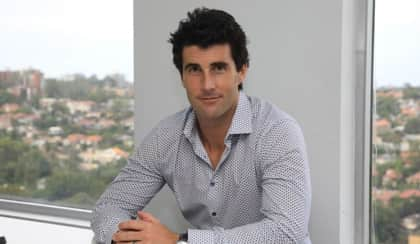Could commercial investment be your ticket to success?
From cash flow to capital, one expert investor shares his tips and tricks on how to successfully invest in commercial property.

After a year of steady interest rate rises, residential investors across the country are feeling the pinch. Twelve consecutive cash rate spikes – and a 13th on the horizon – have pushed residential mortgages up a whopping 52 per cent. With financial pressure tightening and returns rapidly shrinking, it’s no surprise that many investors are pulling out of the residential market.
According to Scott O’Neill, however, there may be a magic bullet for Aussie investors: commercial property.
As the founder and managing director of Rethink Investing, and the co-author of Rethink Property Investing, Mr O’Neill knows that “in the current economic climate, cash flow is king”.
He started his own investment journey with a residential purchase in South Sydney at the tender age of 23, as he recounted in a recent episode of Inside Commercial Property. Once he and his wife Mina O’Neill crunched the numbers, however, they were soon convinced to transition into commercial.
“We found that the yields were two to three times better than residential,” Mr O’Neill explained. He said the average net yield for residential property in Australia is 2–3 per cent, but the commercial net yield is 6–8 per cent, a 200 per cent increase.
“These numbers were a complete game-changer for us,” the investor stated.
From their first commercial purchase – a convenience store and takeaway – the duo branched out into shopping centres, medical centres, childcare centres, manufacturing businesses, major fast food outlets like KFC and Hungry Jack’s, and supermarkets like ALDI and IGA.
Throughout the journey, Mr O’Neill reported that three core principles are responsible for their joint success – and he believes these tactics are replicable.
“By applying these insights and staying committed to your investment strategy, you can build a robust portfolio and attain financial security over time,” he claimed.
1. Cash flow comes first
“In the realm of commercial property, cash flow should be your guiding principle,” the investor underscored.
“The financial health of your commercial property portfolio depends on your ability to ensure that rental income consistently exceeds operating expenses.”
In practical terms, Mr O’Neill revealed that the best way to maintain cash flow is to maximise rental returns. He suggests that when selecting a property, it is best to target sites with underperforming tenancies and then increase rents to match market value.
Increasing lettable floorspace, such as by creating mezzanines or leasing out carparks, can also raise rental returns.
2. Always add value
Increasing rental return doesn’t just have a cash flow benefit. According to Mr O’Neill, it also adds capital value.
“Remember, the more rent you receive, the higher the valuation,” he reiterated.
Raising stunted rents to market value, for instance, can increase equity. Purchasing properties with short leases and then lengthening them can also increase security for future investors, and Mr O’Neill stressed that “as security is attractive, they will likely pay more for the investment” come sale time.
Buying in growth areas, or making strategic upgrades to a property can also boost long-term property value, according to the investor.
3. Start small
The 2010 Australian property market was a world away from the spiralling interest rates and rock-bottom supply levels of today, but Mr O’Neill maintained that success is still reachable for up-and-coming investors.
“You can still purchase freehold residential investments for around $500,000 in capital cities in Australia,” he emphasised. Sydney might be off the cards, but he claimed it is still possible to purchase growth-oriented properties in other capital cities.
“Time will show that they will get great growth which will leverage you into your second or third investment,” he stated.
“The key is to save about $80,000 to $100,000 as a deposit, and the banks will do the rest.”
It might mean an uncomfortable few years of scrimping and saving, but Mr O’Neill asserted that the long-term yields will be worth the temporary pain.

